Growing Amorphophallus Titanum: Tips and Care Guide (corpse flower)
Amorphophallus plants, also known as “corpse flowers” or “voodoo lilies,” are captivating specimens that can add a touch of intrigue to any garden. Whether you’re a seasoned gardener or new to the world of exotic plants, this blog post aims to provide you with practical tips and guidance on how to successfully grow and care for Amorphophallus.
In this comprehensive guide, we will explore the essential aspects of Amorphophallus care, offering insights and expert advice to ensure the health and vitality of your plants.
From selecting the right species and obtaining healthy tubers to creating an optimal growing environment and addressing common challenges, we’ll cover all the necessary information.
Understanding the Cultivation of Amorphophallus
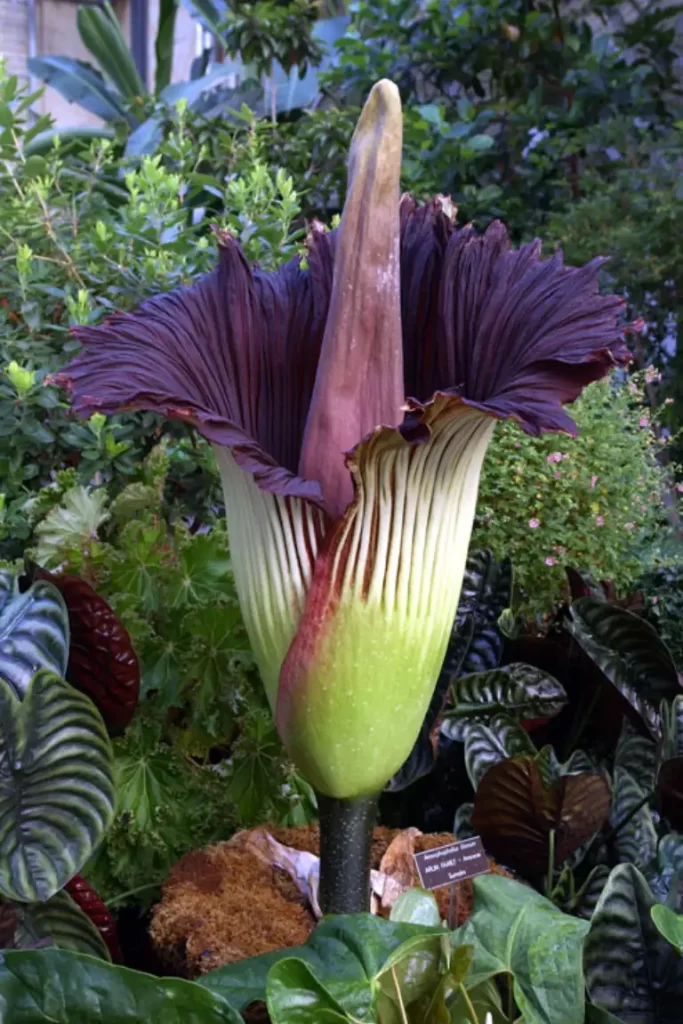
Amorphophallus, also known as the voodoo lily or corpse flower, is a unique and fascinating plant species that requires specific care and attention to thrive. Understanding the cultivation of amorphophallus involves knowing the specific care requirements for each species, as well as understanding its dormancy period and ornamental gardening potential.
Specific Care Requirements
One of the most important aspects of cultivating amorphophallus is understanding its specific care requirements.
Different species have different needs water, soil type, and temperature. For example, some species prefer bright but indirect light while others require full sun exposure. Similarly, some species prefer moist soil while others can tolerate drier conditions.
It’s important to research the specific care requirements for your particular species of amorphophallus before planting it in your garden or home. This will ensure that you provide it with the optimal growing conditions for healthy growth.
Dormancy Period
Another crucial aspect of cultivating amorphophallus is understanding its dormancy period. During this time, which typically occurs during winter months but can vary depending on the species and location, the plant goes into a state of rest where it conserves energy and prepares for its next growth cycle.
To ensure successful cultivation, it’s important to allow your amorphophallus plant to go through this natural dormancy period without disturbing it too much. This means reducing watering frequency and avoiding fertilization during this time. Once spring arrives and new growth begins again, resume regular watering and fertilization according to your plant’s specific needs.
Ornamental Gardening Potential
Finally, many species of amorphophallus are prized for their unique appearance and are often used in ornamental gardening. The voodoo lily in particular is known for its large leaves and striking inflorescence that emits a pungent odor similar to that of rotting flesh.
When using amorphophallus in ornamental gardening, it’s important to consider its size and growth habits. Some species can grow quite large and may require ample space in the garden or a large container for indoor cultivation. It’s also important to consider the plant’s unique appearance and how it will fit into your overall garden design.
How to Grow Amorphophallus Titanum: A Step-by-Step Guide
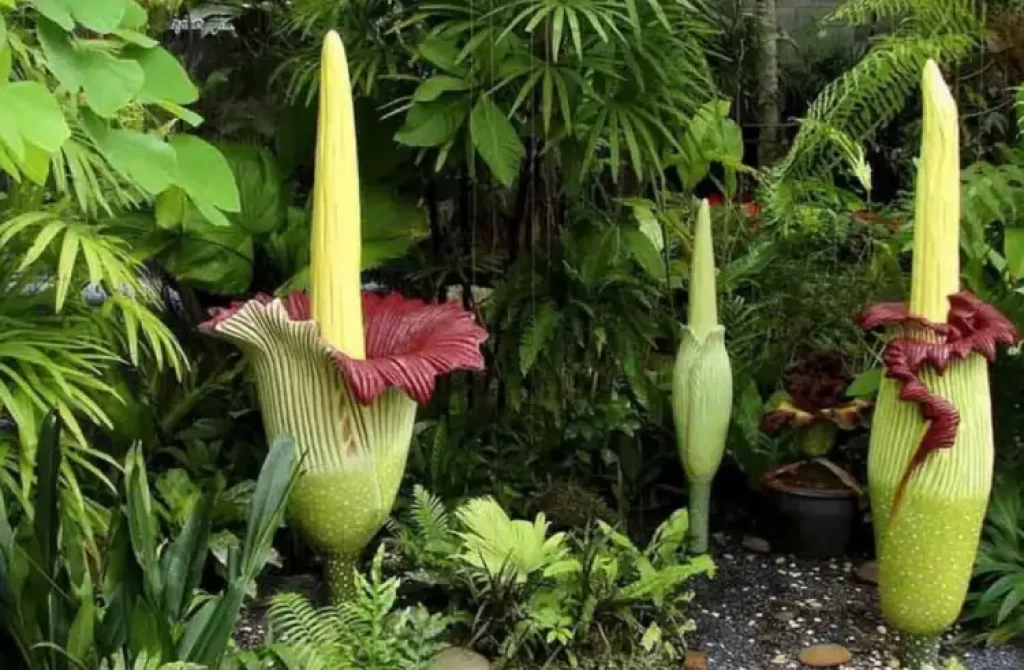
Growing Amorphophallus Titanum, also known as the Corpse Flower, can be a challenging but rewarding experience for plant enthusiasts. This giant flowering plant is native to the rainforests of Sumatra and requires specific growing conditions to thrive. In this guide, we will discuss step-by-step how to grow Amorphophallus Titanum successfully.
Choose a well-draining soil mix for your amorphophallus titanum.
Amorphophallus Titanum prefers soil that is well-draining and rich in organic matter. It’s essential to avoid using heavy soils or those that retain too much moisture, which can lead to root rot and other diseases. A suitable soil mix should contain equal parts of peat moss, perlite, and sand.
Keep the soil moist but not waterlogged to prevent root rot.
The Corpse Flower requires consistent moisture levels, but it’s crucial not to overwater it. Overwatering can cause root rot and other fungal infections that can damage or kill the plant. To maintain proper moisture levels, water your Amorphophallus Titanum once or twice a week with room temperature water.
Place your plant in a warm, humid environment with indirect sunlight.
Amorphophallus Titanum thrives in warm temperatures between 75°F – 85°F (24°C – 29°C) and high humidity levels between 60% – 80%. It’s essential to place your plant in an area where it can receive indirect sunlight or filtered light as direct sunlight can scorch its leaves. You may consider placing it near a window with sheer curtains or under artificial lights if you don’t have access to natural light sources.
Fertilize your amorphophallus titanum with balanced fertilizer every 2-3 weeks during the growing season.
To promote healthy growth and blooming, it’s essential to fertilize your Amorphophallus Titanum every 2-3 weeks during the growing season (spring and summer). Use a balanced fertilizer with an NPK ratio of 10-10-10 or 20-20-20. Avoid using high-nitrogen fertilizers as they can cause the plant to produce more leaves than flowers.
Watch for signs of pests or diseases and treat promptly to prevent damage to your plant.
Amorphophallus Titanum is susceptible to pest infestations such as spider mites, thrips, and mealybugs. It’s crucial to inspect your plant regularly for any signs of pest activity or disease symptoms such as yellowing leaves, wilting, or black spots on the stem. If you notice any issues, treat them promptly with insecticidal soap, neem oil, or other natural remedies.
Tips and Tricks for Watering Your Amorphophallus Plant
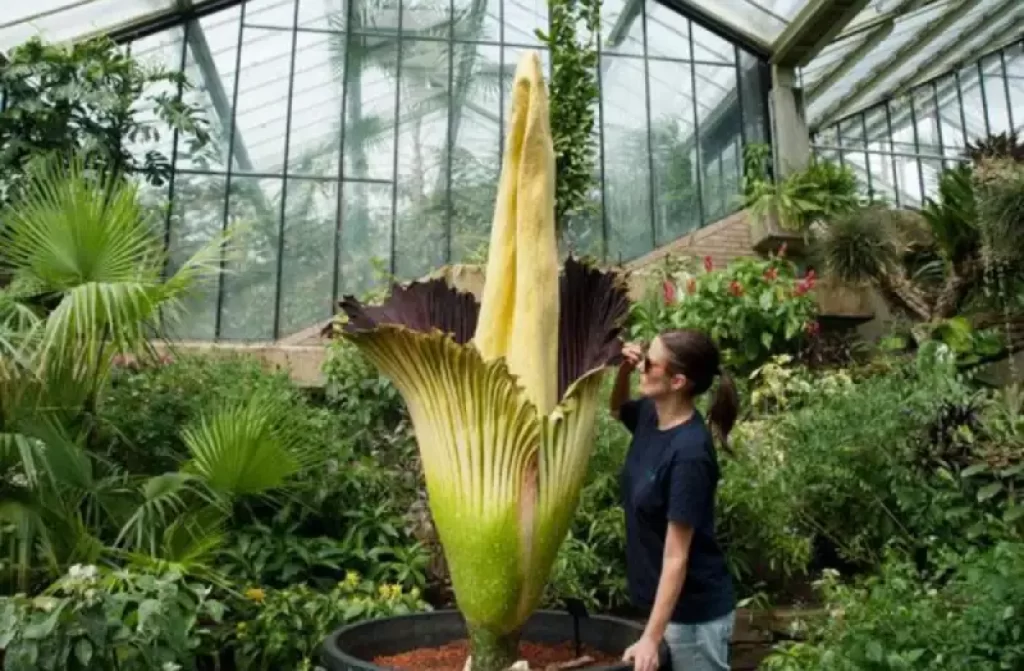
Watering your amorphophallus plant is crucial to its growth and health. However, it can be tricky to know exactly how much water your plant needs, and when to water it. In this section, we’ll discuss some tips and tricks for watering your amorphophallus plant.
Deep and Infrequent Watering
One of the most important things to keep in mind when watering your amorphophallus plant is that you should water it deeply and infrequently. This means that you should give it a good soak, but then allow the soil to dry out slightly before watering again.
The reason for this is that amorphophallus plants are native to tropical regions where they receive periodic heavy rainfall followed by periods of drought. Mimicking these conditions will help your plant thrive.
Allow Soil to Dry Out Slightly
As mentioned above, allowing the soil to dry out slightly between waterings is key. You don’t want the soil to become bone-dry, but you also don’t want it to be constantly moist.
To check if your plant needs water, stick your finger into the soil up to about an inch deep. If it feels dry at that depth, then it’s time to water again.
Avoid Overwatering
Overwatering is one of the biggest mistakes people make when caring for their amorphophallus plants. It can lead to root rot and other issues that can ultimately harm or kill your plant.
To avoid overwatering, make sure that the pot has drainage holes so excess water can escape. Also, be careful not to let water sit in a saucer under the pot as this can lead to soggy soil.
If you’re unsure whether or not your plant needs water, err on the side of caution and wait a day or two before checking again.
Choosing the Right Soil for Your Amorphophallus Plant
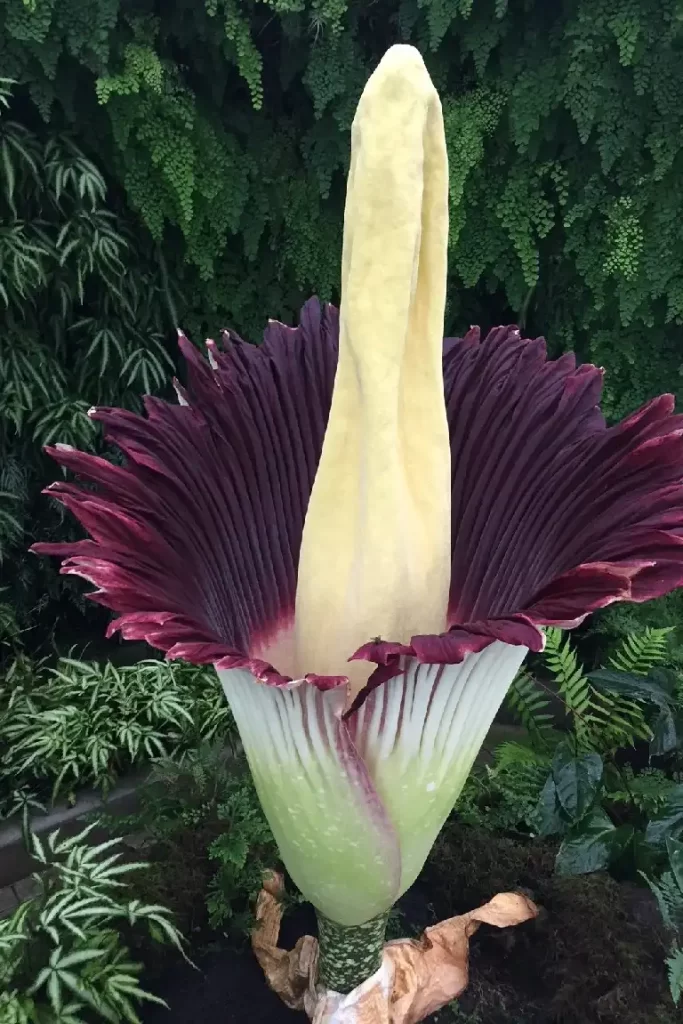
choosing the right soil is crucial for their optimal growth. These plants require rich soil with a lot of organic matter and nutrients. In this section, we’ll discuss the importance of soil quality and how to choose the best soil for your amorphophallus plant.
Soil Requirements for Amorphophallus Plants
Amorphophallus plants are native to tropical regions and thrive in moist, well-draining soils that are rich in organic matter. The ideal pH range for these plants is between 5.5 and 6.5, which is slightly acidic to neutral.
The main reason why amorphophallus plants need rich soil is that they rely on their tubers as storage organs to sustain them during periods of dormancy. If the soil lacks essential nutrients, the tubers will not develop properly, leading to stunted growth or death.
How to Choose the Best Soil for Your Amorphophallus Plant
Here are some tips on how to choose the best soil for your amorphophallus plant:
- Use a high-quality potting mix – A good potting mix should contain a blend of peat moss, perlite, vermiculite, and composted bark or other organic matter. Avoid using garden soil as it may contain pests or diseases that can harm your plant.
- Add organic matter – To improve soil fertility and structure, add organic matter such as compost or well-rotted manure to your potting mix before planting.
- Ensure good drainage – Amorphophallus plants do not like wet feet and prefer well-draining soils that allow excess water to drain away quickly. To ensure good drainage, add coarse sand or perlite to your potting mix.
- Maintain moisture levels – While amorphophallus plants prefer moist soil, they do not like to be waterlogged. To maintain optimal moisture levels, water your plant when the top inch of soil feels dry to the touch.
Removing Infected Tubers
If you notice any signs of disease or pests on your amorphophallus plant, it’s essential to take immediate action to prevent further spread. One way to do this is by removing infected tubers from the soil.
Infected tubers can cause serious damage to your plant and may even kill it if left untreated. Common diseases that affect amorphophallus plants include mealybugs, root rot, and fungal infections.
To remove infected tubers, carefully dig up the affected area using a garden fork or trowel. Be sure to wear gloves and dispose of any infected material in a sealed plastic bag. Do not compost infected material as this may lead to further contamination.
Temperature and Humidity Requirements for Growing Amorphophallus
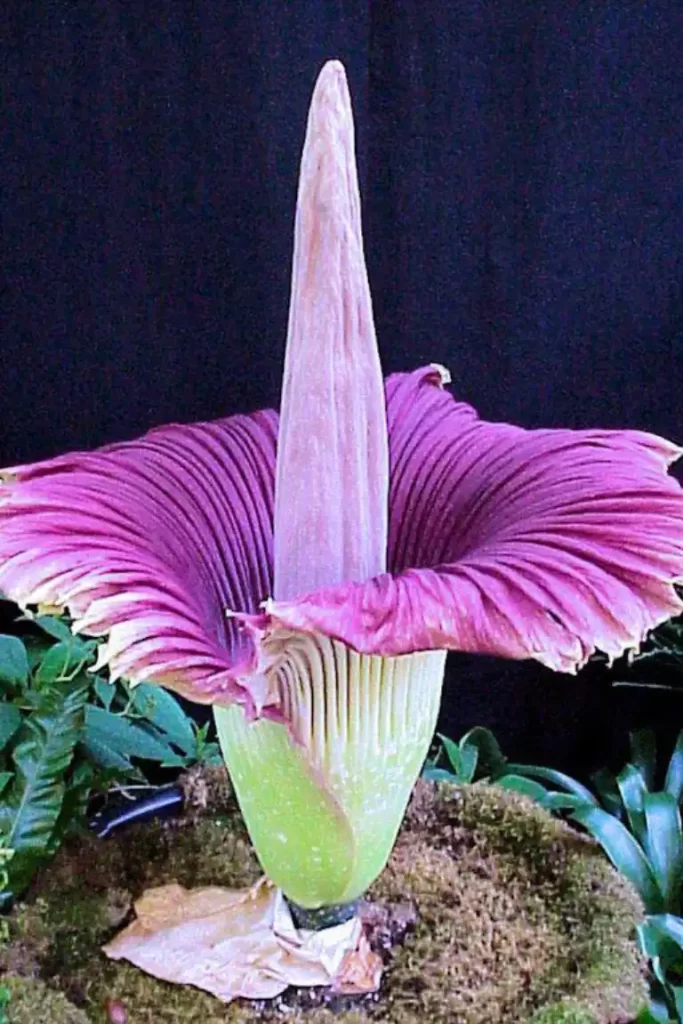
Growing amorphophallus can be a rewarding experience for any plant enthusiast. However, to achieve optimal growth, it is crucial to understand the temperature and humidity requirements of this unique plant species.
Warm Temperatures are Essential
Amorphophallus requires warm temperatures to grow. The ideal temperature range for growing amorphophallus is between 20°C to 30°C. This means that the plant should be kept in a warm environment with consistent temperatures throughout the day and night.
It is important to note that amorphophallus cannot withstand frost or freezing temperatures. Therefore, it is recommended that you do not expose your plants to cold weather conditions as they will not survive.
High Humidity Levels are Necessary
High humidity levels are essential for the growth of amorphophallus. The plant thrives in humid environments where there is plenty of moisture in the air. In fact, low humidity levels can cause leaf tips to turn brown and curl up.
To ensure optimal growth, it is recommended that you maintain a humidity level of at least 60%. You can achieve this by placing a tray of water near your plants or by using a humidifier.
Tolerates a Wide Range of Temperatures
While amorphophallus requires warm temperatures and high humidity levels, it can tolerate a wide range of temperatures. However, extreme fluctuations in temperature can affect its growth and development.
Therefore, it is essential to maintain consistent temperatures throughout the day and night. You can achieve this by keeping your plants in an area where there are no sudden changes in temperature such as near windows or doors.
Watering Your Amorphophallus: Tips and Tricks
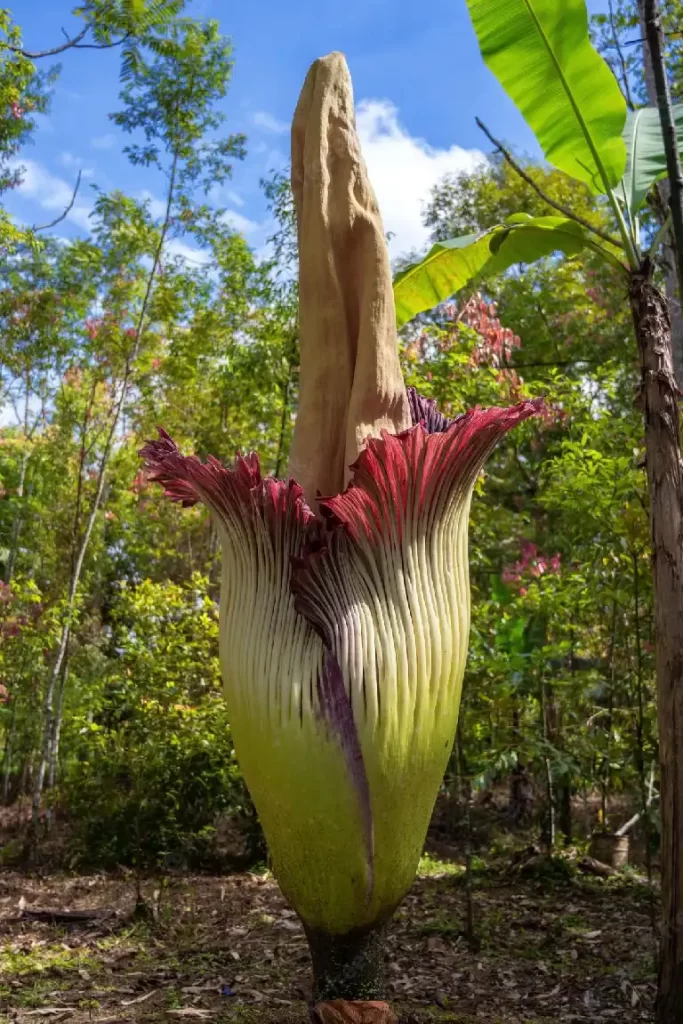
Watering your amorphophallus plant is essential to ensure its healthy growth and development. However, it is crucial to water them correctly to avoid overwatering or underwatering. Here are some tips and tricks that you can follow to water your amorphophallus effectively.
1. Water your amorphophallus thoroughly but avoid overwatering.
Amorphophallus plants require regular watering, especially during the growing season. When watering, make sure you provide enough water to soak the soil thoroughly. However, be careful not to overwater as this can lead to root rot and other diseases.
To prevent overwatering, check the soil’s moisture level before watering again. You can do this by sticking your finger into the soil up to an inch deep. If it feels dry, it’s time to water your plant again.
2. Allow the soil to dry out slightly before watering again.
Amorphophallus plants prefer moist but well-draining soil. Therefore, it’s essential not to let the soil stay too wet for too long as this can cause root rot and other fungal diseases.
Allow the topsoil of your plant’s potting mix to dry out slightly between watering sessions before giving it another round of hydration.
3. Reduce watering during the resting period to prevent root rot.
During winter or when your amorphophallus plant goes dormant, reduce its watering frequency significantly. This is because they require less water during their resting period than they do during their active growth phase.
Reducing their water intake will help prevent root rot and other fungal infections that thrive in damp conditions when combined with low temperatures.
4. Repot your amorphophallus every few years for proper drainage and prevention of excess water retention.
Repotting your amorphophallus plant every few years is essential to ensure proper drainage and prevent excess water retention. Over time, the potting mix can become compacted, making it difficult for water to drain correctly.
When repotting, make sure to use a well-draining potting mix and a container with adequate drainage holes. This will help prevent overwatering and keep your plant healthy and thriving.
How much fertilizer does Amorphophallus titanum need?
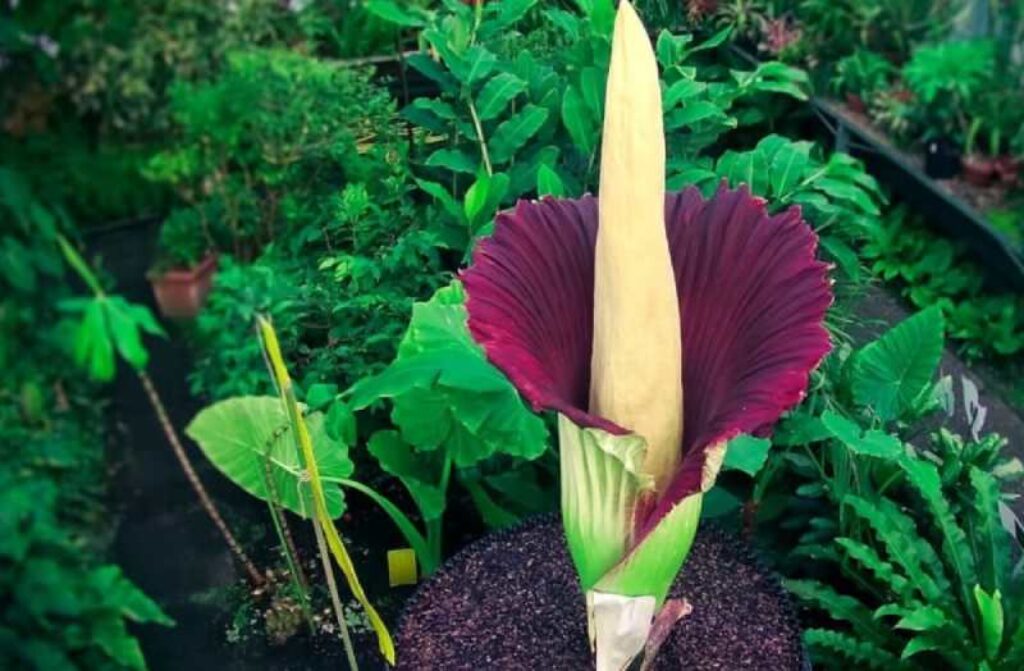
Amorphophallus titanum, also known as the corpse flower, is a unique and fascinating plant that can grow up to 10 feet tall. However, growing this plant requires some care and attention. One of the key factors in growing Amorphophallus titanum successfully is providing it with the right amount of fertilizer.
Fertilizer Requirements for Amorphophallus Titanum
Amorphophallus titanum requires a moderate amount of fertilizer to grow. Using a balanced fertilizer with an NPK ratio of 10-10-10 is recommended for best results. This ratio ensures that the plant receives equal amounts of nitrogen (N), phosphorus (P), and potassium (K).
It’s important to apply fertilizer once a month during the growing season, which typically runs from spring through fall. During the dormant period in winter, reduce the frequency of fertilization to once every three months.
In addition to NPK, trace elements such as iron, manganese, and zinc are essential for healthy growth and should be included in the fertilizer mix. These micronutrients play crucial roles in various metabolic processes within the plant.
Questions Related to Fertilizing Amorphophallus Titanum
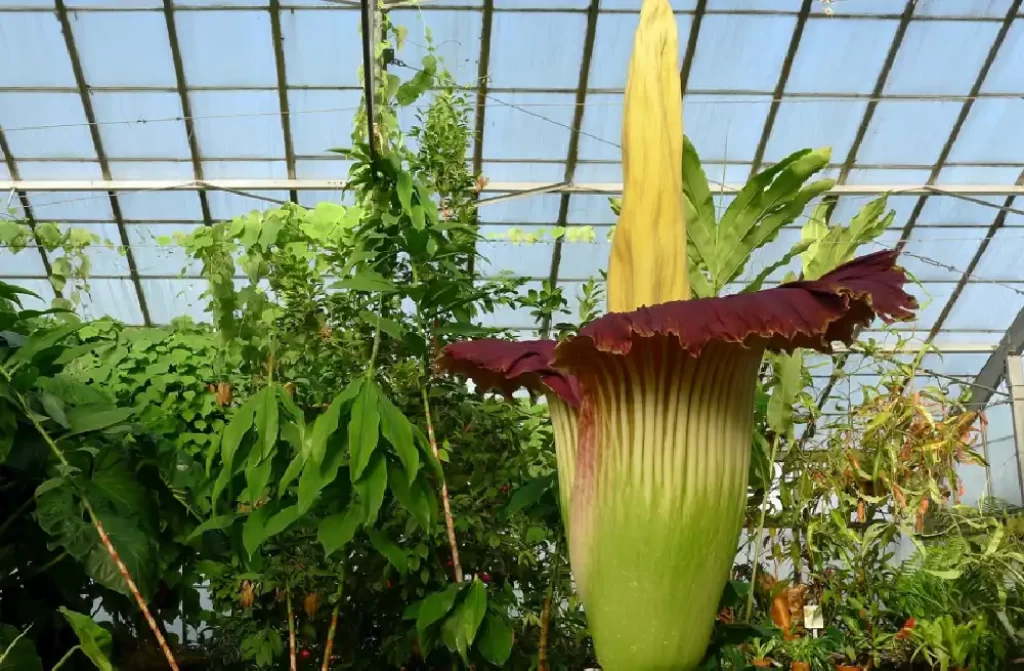
How much water does Amorphophallus titanum need?
Amorphophallus titanum requires regular watering but doesn’t tolerate standing water or overly wet soil. It’s best to keep the soil moist but not saturated. Watering once or twice a week during hot weather is usually sufficient.
How much sun does Amorphophallus titanum need?
Amorphophallus titanum prefers bright indirect light or filtered sunlight but can tolerate some direct sunlight early in the morning or late in the afternoon. Avoid exposing it to intense midday sun as it can scorch its leaves.
What temperature does Amorphophallus titanum need?
Amorphophallus titanum thrives in warm temperatures between 70-85°F (21-29°C) during the day and 60-65°F (15-18°C) at night. It’s important to protect it from cold drafts or sudden temperature drops.
What types of pests bother Amorphophallus titanum?
Amorphophallus titanum is susceptible to spider mites, mealybugs, and scale insects. Regular inspection of the plant for signs of infestation is crucial. Insecticidal soap or neem oil can be used to control these pests.
Happy Growing with Your Amorphophallus Plant
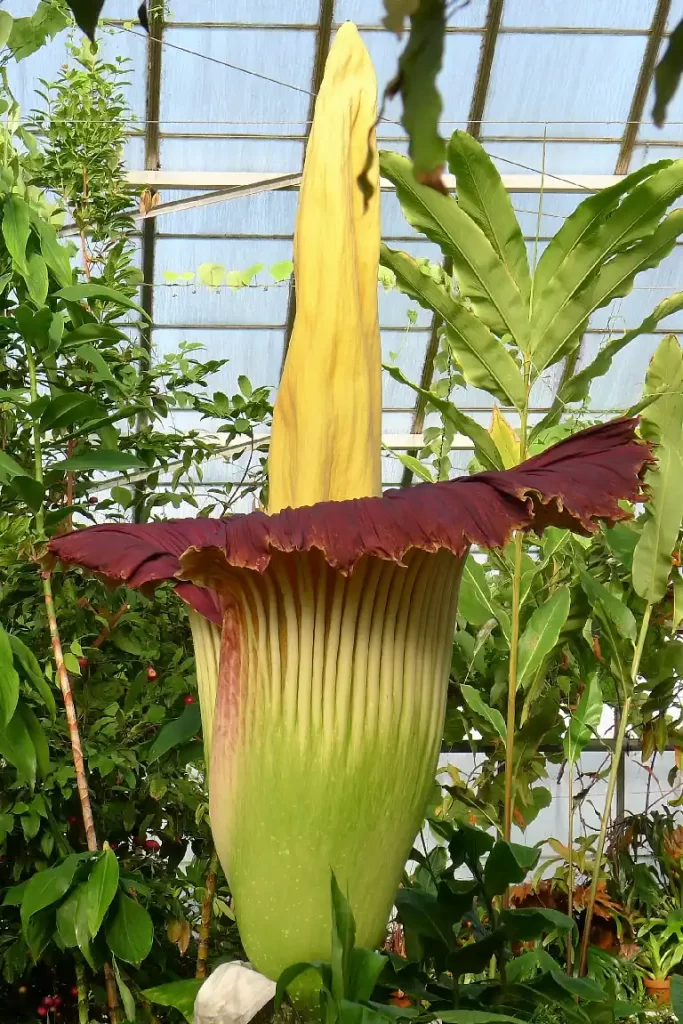
Congratulations! You are now equipped with the knowledge and skills to successfully grow and care for your amorphophallus plant. By following the step-by-step guide on how to grow amorphophallus titanum, you can ensure that your plant will thrive and produce beautiful blooms.
Remember to choose the right soil, provide adequate watering, maintain proper temperature and humidity levels, and fertilize appropriately. If you want to try growing a corpse flower, make sure to follow the specific care instructions.
By implementing these tips and tricks for growing amorphophallus plants, you can enjoy a healthy and vibrant addition to your indoor or outdoor garden. Don’t be afraid to experiment with different techniques or seek advice from other experienced growers.
So what are you waiting for? Get started on growing your own amorphophallus plant today and experience the joy of watching it flourish under your care!
You might also like
- All About Common Sunflowers
- Cultivating Paphiopedilum Venus Slipper Orchids
- Growing Japanese Maple: Care Tips & Cultivars
- How to Grow and Care for Wollemi Pine trees






